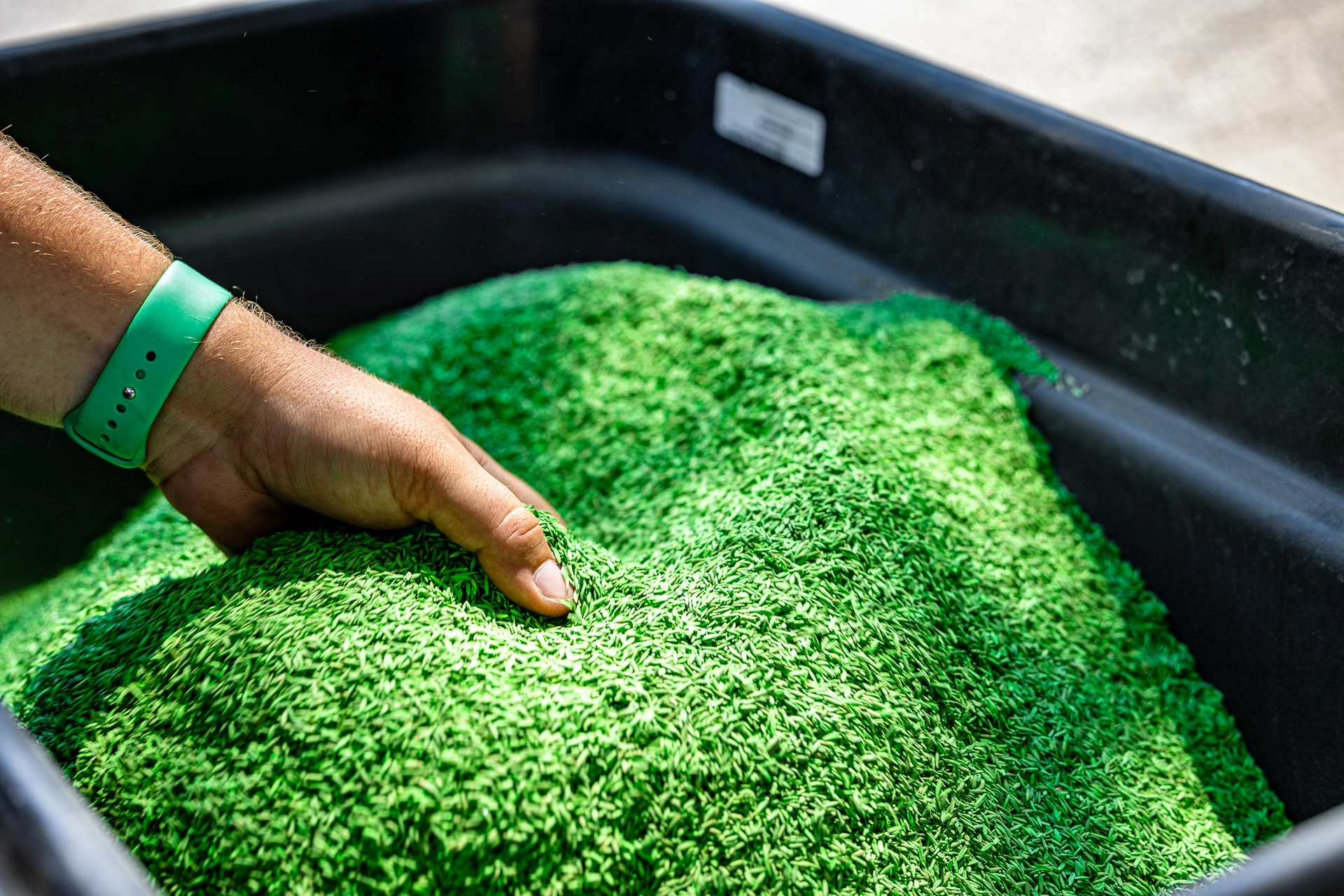Maximizing Grass Seed Germination: What to Do Before and After Aeration
Aeration is a crucial step in maintaining a healthy, lush lawn, but the benefits can definitely be lacking if not prepared properly. To truly maximize the benefits of aeration, it's important to follow specific steps before and after the process. This checklist will guide you through the key actions to take, ensuring your grass seed germination is successful and your lawn thrives.
Pre-Aeration Checklist
1. Mow Your Lawn (Shorter Than Usual) - Before aeration, mow your lawn to a shorter height than usual. This makes it easier for the aerator to penetrate the soil and for the seeds to reach the soil surface after overseeding.
2. Watering - Water your lawn thoroughly a day or two before aeration. This softens the soil, allowing the aerator to pull out deeper cores (plug of soil). However, avoid overwatering, as excessively wet soil can clog the aerator and leave ruts in the lawn. Between 30-40 minutes is recommended in each area of the lawn.
3. Mark Irrigation Systems and Obstacles - Flag any sprinkler heads, invisible dog fences, underground lighting or other obstacles in your yard. This prevents damage to your property and ensures the aerator operates smoothly. We also recommend calling 811 to mark the underground utilities and cable/internet lines.
4. Remove Debris - Clear your lawn of any sticks or large debris that could interfere with the aeration process. You want to have a clear and clean workspace so that the machine can penetrate the entire lawn effectively.
Post-Aeration Checklist
1. Overseeding - If seeding on your own, spread grass seed over the area after aerating. The holes created by aeration provide an ideal environment for seed germination, offering awesome soil-to-seed contact.
2. Cover - You may want to consider laying topsoil or straw over grass seed in any bare areas. This will help keep the seed in place, as well as hold in moisture to get a higher germination rate. With new grass seed, once it gets wet and dries out, the germination rate goes down. Seed that just lays on top of the soil will have trouble germinating because it is constantly being dried out by wind.
3. Watering - Keep the soil consistently moist to aid seed germination. Lightly water your lawn twice a day for the first couple of weeks after overseeding, ensuring that the soil doesn't dry out. Gradually reduce watering frequency as the grass begins to establish.
4. Avoid heavy Foot Traffic - Limit foot traffic on your laen for a few weeks after aeration and overseeding so new grass can grow without being delayed. Especially areas that get worn down from constant use by children and pets.
5. Monitor and Maintain - Keep an eye on the new grass as it grows. Continue to mow as needed, but be gentle with the new growth. Consider a follow-up fertilization after about 6-8 weeks to sustain healthy growth.
By folloowing these pre abd post-aeration steps, you can significantly improve grass seed germination, maximize growth and set your lawn up for success! Caring for a yard is a process, but maded easier when having the clear guidelines to follow, while keeping it on a schedule as well. Give us a call so we can figure out what we can do for your lawn and have it be the envy of the neighborhood!



Comments (0)
Thanks for your comment!
Thanks for your feedback! Your comments have been successfully submitted! Please note, all comments require admin approval prior to display.
Error submitting comment!
There is a problem with your comment, please see below and try again.